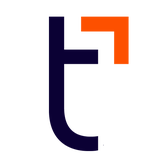PEO vs. In-House HR: The Complete Cost Analysis for Growing Businesses

Table of contents
- 1.The Real Cost of Building an In-House HR Department
- 2.Personnel costs: More than just salaries
- 3.Technology infrastructure: The hidden money pit
- 4.Operational expenses that add up
- 5.The compliance challenge
- 6.PEOs: Investment and Value Analysis
- 7.Transparent PEO pricing structure
- 8.Where PEOs can create real cost efficiency
- 9.Value-added services that transform operations
- 10.PEO vs. In-House HR: Make the Strategic Choice
When evaluating HR solutions for a growing business, the central question often boils down to: Which is more cost-effective? To determine this, you have to examine three critical factors: direct operational costs, hidden expenses that quietly drain resources and the return on investment.
One common option for small and medium-sized businesses, in-house HR, provides a certain level of control. On the other hand, a different option, PEOs, could deliver superior cost efficiency through economies of scale, HR expertise and freed leadership capacity.
Let's review the costs of PEO vs. in-house HR, so you can make the optimal choice for your business.
The Real Cost of Building an In-House HR Department
Building an internal HR department involves serious investment that extends well beyond basic salaries. Most business owners focus on the obvious costs: HR salaries, benefits, office space. But they might miss significant hidden expenses.
Personnel costs: More than just salaries
According to the Bureau of Labor Statistics, the median HR specialist salary was $72,910 in 2024, but this represents just the base of the total cost commitment.
Salaries and benefits vary significantly based on business location, industry competitiveness and level of specialization. Companies in major metropolitan areas or niche industries often pay well above national averages to attract qualified talent.
Beyond base salaries, businesses have to account for:
- FICA taxes and other payroll taxes
- Benefits and retirement contributions
- Unemployment insurance
- Workers' compensation
Recruitment for qualified HR talent represents another significant cost. You might have to account for specialized recruiters, job board fees, background checks and training time for new hires.
Ongoing development isn't optional, either. HR professionals require continuous education for compliance updates, certification maintenance and skill development. Businesses may need to budget for HR employees to attend conferences to keep their HR expertise up-to-date.
Technology infrastructure: The hidden money pit
HR professionals require sophisticated tools to manage complex responsibilities effectively, and these systems represent a substantial ongoing investment that many businesses underestimate.
On average, human resources information systems (HRISs) range from $5 to $17 per employee per month, though a global HRIS will cost you a bit more. There also may be implementation fees and the cost of annual maintenance by a service provider.
System integration and customization creates additional expenses. Connecting HR systems with existing business software requires technical expertise and ongoing maintenance. Dedicated IT support for HR systems, data storage, data security and user support can add another expense. These costs may vary depending on system complexity and user count.
Operational expenses that add up
Running an HR department generates indirect expenses that impact the bottom line in ways that aren't immediately obvious. Think of office space and equipment requirements for workspace, furniture and computers.
Legal and compliance consulting can become an added expense, too, even with internal HR expertise. Businesses frequently require specialized legal counsel for complex employment issues, policy development and regulatory compliance.
Another example of this type of expense is commissions for benefits brokers, which typically are 2%-8% of total premium costs.
The compliance challenge
The complexities of employment-related law can expose businesses that manage HR internally to certain risks. Federal and state regulations demand specialized expertise on things like:
- Workplace safety
- Equal opportunity employment
- Wage and labor laws
- Benefits administration
When compliance issues arise, they can quickly escalate into expensive legal battles involving attorney fees, settlements, fines and lost productivity. Even seemingly minor infractions could result in costly legal fees.
Regular compliance reviews require external expertise and ongoing investment. If violations are found, the remediation costs can multiply significantly beyond the initial review expenses.
PEOs: Investment and Value Analysis
A professional employer organization enters a co-employment relationship with clients. The PEO helps handle certain HR functions while businesses maintain operational control.
This model allows small and medium-sized businesses to access enterprise-level HR capabilities without the infrastructure investment. Research by NAPEO estimates the expected ROI for PEO clients based on cost savings alone is27.2% per year*.
Transparent PEO pricing structure
PEO pricing structures provide a more predictable, scalable costs that grow with business needs. Most PEOs charge an admin fee of per employee monthly fee. This can simplify financial planning for small businesses.
Alternative pricing structures charge a percentage of total payroll, providing flexibility for businesses with varying compensation levels or seasonal employment patterns. They typically have initial onboarding fees, though some PEOs can waive these fees for multi-year commitments.
PEOs typically provide HR software in their base pricing, eliminating separate software licensing costs. This also provides integrated payroll processing, benefits and compliance support.
Where PEOs can create real cost efficiency
PEOs can enhance cost efficiency in a number of ways.
- HR staff costs. Businesses can streamline certain HR functions, which can optimize staffing needs. This can lead to cost efficiencies while maintaining excellent service levels on administrative tasks.
- Reduced technology expenses. A PEO generally offers an HRIS, so businesses may not need a separate HRIS. The savings can be significant for SMBs that are managing multiple HR technology platforms.
- Access to cost-effective benefits. For businesses that want to offer benefits but minimize the expenses, this can be a game-changer.
- Support with compliance. PEOs have expertise in employment-related rules and requirements. By working with a PEO, businesses can navigate compliance requirements—potentially reducing the costs associated with noncompliance.
Value-added services that transform operations
PEOs often provide services that are generally cost-prohibitive for individual businesses to develop internally:
- Expert HR consultation and strategy. PEOs provide access to seasoned HR professionals with specialized expertise in employment-related law, organizational development, workforce management and strategic planning. This kind of outsourcing consultation can typically costs $150+ per hour when purchased independently.
- Compliance resources and updates. A PEO can help with staying on top of regulatory changes. They provide resources to help businesses comply and navigate the constantly changing requirements.
- Training and development programs. A PEO can offer access to comprehensive training libraries, leadership development programs and professional development resources that individual businesses may not be able to afford to develop or purchase separately.
- Risk mitigation and workplace safety services. There's nothing more cost-effective than mitigating risks. PEOs may offer workplace safety assessments, injury prevention programs and workers' compensation claims management that can help reduce costs and enhance workplace safety outcomes.
- Scalable growth support. PEO services can scale efficiently with business growth. SMBs can maintain staffing flexibility and avoid the costs of hiring additional HR staff or upgrading systems during expansion phases.
PEO vs. In-House HR: Make the Strategic Choice
The choice between in-house HR and PEO ultimately depends on specific business needs, growth trajectory and risk tolerance. However, PEOs have a proven ability to provide access to expertise and services that may be difficult or costly for some businesses to develop internally.
Deepa Gandhi, co-founder of Dagne Dover, a company that designs and sells totes, backpacks and other bags, appreciates TriNet's cost-efficient, scalable PEO solution.
“TriNet continues to scale and offer new options, so we'd love to continue working together,” Gandhi says. “I do not have any desire to build out a full in-house HR team that manages all the different parts. I'd rather be able to keep that team focused on culture and employee development and then they can leverage TriNet to manage the administrative logistics of people operations."
Ready to find out what TriNet can do for you? Get a sense of the pricing for your business in three easy steps.
This article is for informational purposes only, is not legal, tax or accounting advice, and is not an offer to sell, buy or procure insurance. It may contain links to third-party sites or information for reference only. Inclusion does not imply TriNet’s endorsement of or responsibility for third-party content.

TriNet Team
Table of contents
- 1.The Real Cost of Building an In-House HR Department
- 2.Personnel costs: More than just salaries
- 3.Technology infrastructure: The hidden money pit
- 4.Operational expenses that add up
- 5.The compliance challenge
- 6.PEOs: Investment and Value Analysis
- 7.Transparent PEO pricing structure
- 8.Where PEOs can create real cost efficiency
- 9.Value-added services that transform operations
- 10.PEO vs. In-House HR: Make the Strategic Choice






